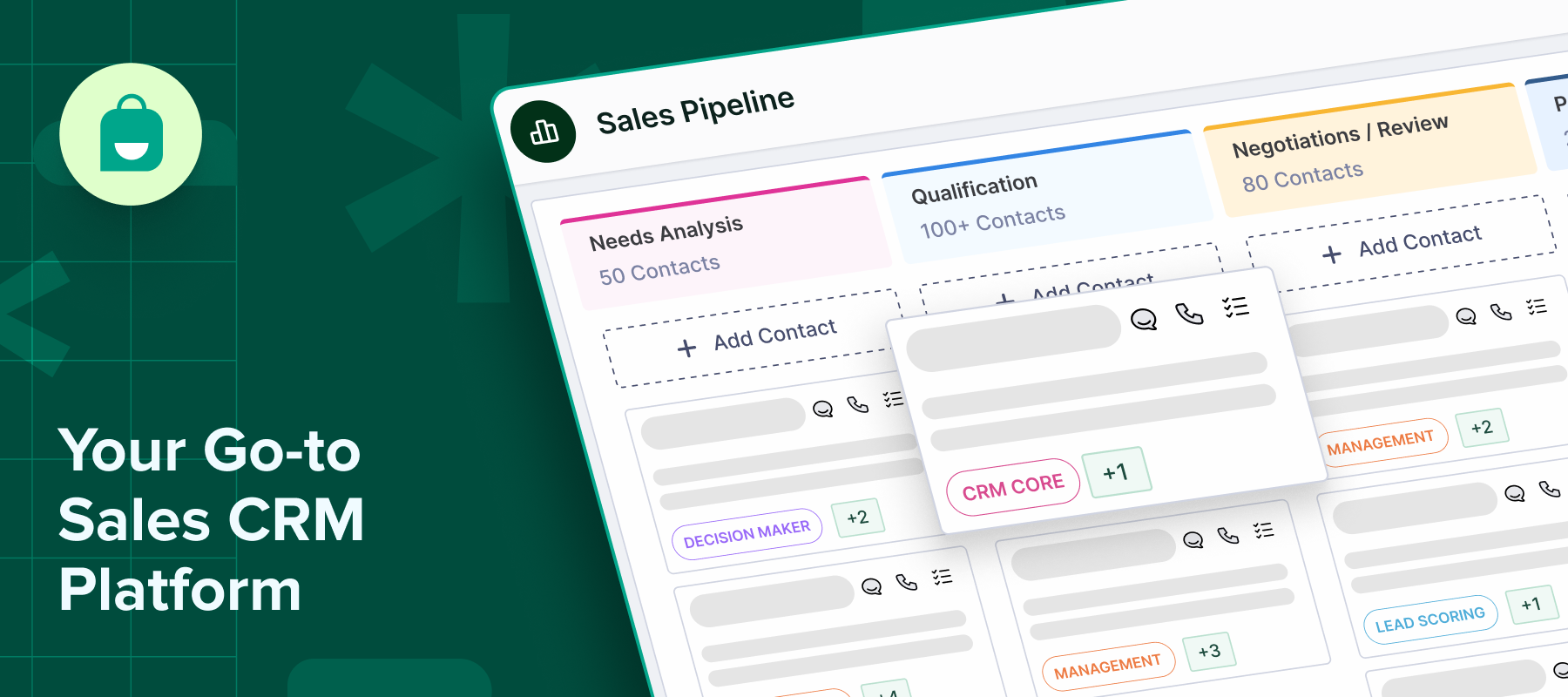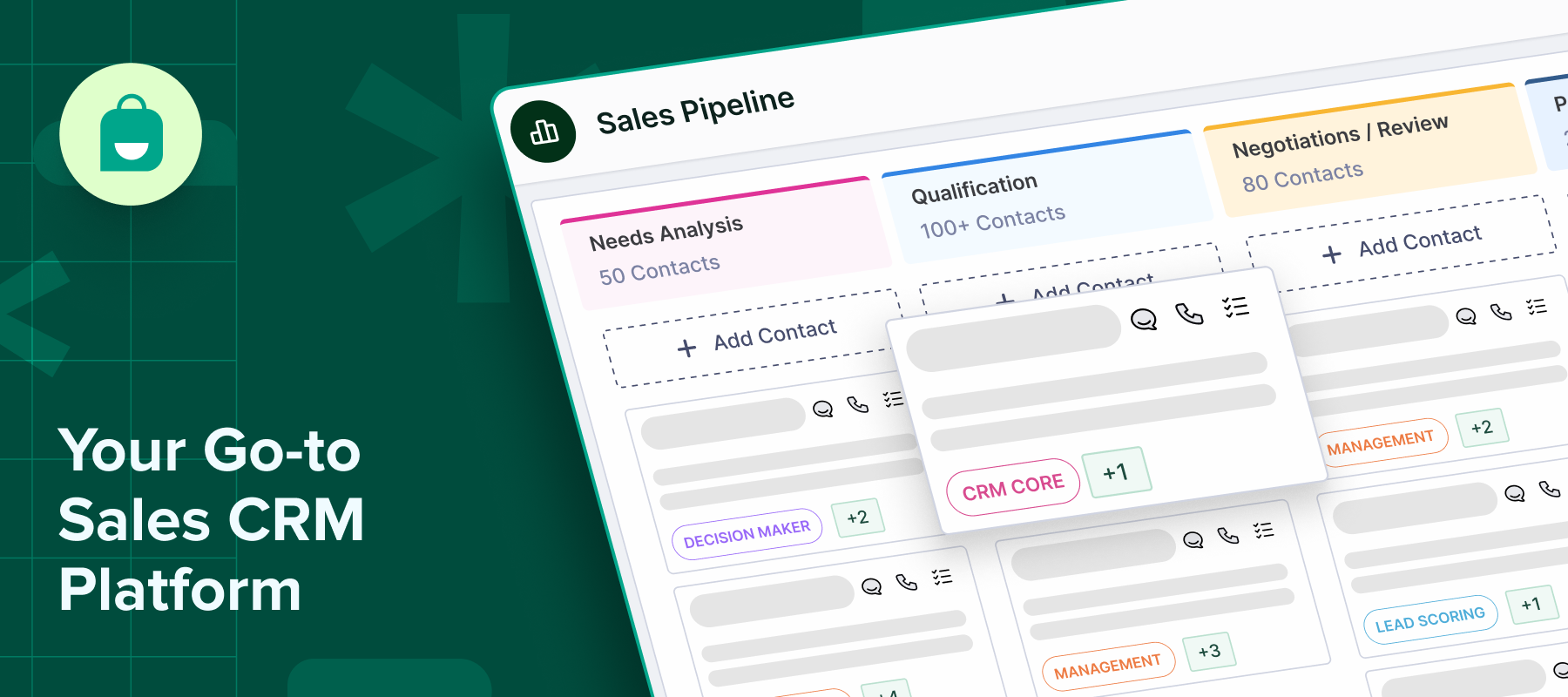Free CRMs have come a long way. What started as simple contact management tools are now offering automation, pipeline tracking, and integrations at no cost.
But can they handle the complexity of enterprise sales in 2025?
If you’re exploring a free sales CRM to manage multi-stage deals, large teams, and longer sales cycles, this post breaks down whether that’s a smart move or a risky shortcut.
What Enterprises Need from a CRM
Here’s what enterprises need from a CRM:
1. End-to-end sales pipeline visibility
Enterprise sales involve multiple stages, stakeholders, and long timelines. A CRM should offer complete visibility across the pipeline, allowing teams to track progress, identify delays, and take informed action at any point in the cycle.
2. Multi-team and role-based access control
With various departments interacting with sales data, a CRM must offer granular access controls. This ensures that each team, whether it’s sales, finance, legal, or support, sees only what is relevant to them, keeping information secure and workflows efficient.
3. Advanced analytics and custom reporting
A CRM should support tailored analytics across multiple dimensions, such as region, product line, or individual rep, helping leaders uncover insights, measure performance, and forecast accurately.
4. Deep integrations with ERP, marketing, and support tools
A CRM must connect seamlessly with ERPs, marketing automation tools, and customer support platforms to ensure data flows smoothly and teams can collaborate without switching systems or duplicating work.
5. Enterprise-grade security and compliance
A CRM built for enterprises must meet standards like SOC 2, GDPR, or HIPAA, and include encryption, audit trails, and permission controls to ensure full compliance.
What Free CRMs Typically Offer
Here’s what a free CRM typically includes:
-Contact and deal management: You can store contacts, track deals, manage a simple pipeline, and view activity timelines.
-Automation and workflow tools: Basic automation features, such as task reminders, email follow-ups, and simple workflow triggers, are typically included.
-Standard reporting dashboards: Most free CRMs offer preset dashboards and activity reports with limited customization options.
-A capped number of users or records: Free plans often limit the number of users you can add or how many records (contacts, deals, etc.) you can store.
-Integrations with third-party tools: You’ll get access to basic integrations with tools like Google Workspace, Slack, or Zoom, but support for advanced or custom integrations is limited.
Limitations of Free CRMs for Enterprise Use
Here’s where most free CRMs fall short for enterprise-level needs:
1.Lack of scalability for large sales teams
Free CRMs often struggle to handle large user volumes, multiple sales pipelines, or complex role hierarchies, making them unsuitable for scaling across enterprise teams.
2.No support for complex multi-step workflows
It typically lacks the logic and flexibility required to automate complex sales processes, approvals, and handoffs across departments.
3.Limited data storage and API access
Free plans often cap the number of records and restrict access to APIs, making it hard to manage large datasets or build integrations at scale.
4.Absence of enterprise-grade security protocols
Most free CRMs lack essential features such as SSO, audit logs, encryption controls, and compliance with frameworks like SOC 2 or HIPAA.
5.Minimal or no dedicated customer support
Support is often limited to help docs or community forums, with no guaranteed response times or dedicated account assistance.
When a Free CRM Might Work for Enterprise Teams
While not built for scale, free CRMs can still be useful in specific enterprise scenarios:
-For pilot teams or early-stage regional rollouts: Free CRMs are a low-risk way to test workflows, gather feedback, and validate processes before investing in a full-scale rollout.
-When the sales process is straightforward and short-cycle: If deals close quickly and don’t involve many steps or stakeholders, a free CRM can cover the basics without overcomplicating things.
-For temporary use during CRM transition or migration: During a system switch or data migration, free CRMs can serve as a lightweight stopgap to keep teams operational with minimal disruption.
-For startups evolving into enterprise scale but still lean: High-growth startups operating with small teams may find free CRMs enough, at least until complexity and volume demand more robust systems.
-When budget constraints temporarily restrict spend: In cases where budgets are frozen or under review, a free CRM can help maintain sales operations without immediate financial commitment.
Key Features to Look For in a Free CRM
If you’re considering a free CRM for enterprise use, choose one that includes or supports the following:
1. API access and webhook support
Look for a CRM that offers open API access and webhook functionality. So, you can connect other tools or build custom workflows without hitting limits.
2. Workflow automation capabilities
Choose a CRM that allows basic automation like lead assignment, task creation, or email triggers to reduce manual work and keep processes consistent.
3. Integration with essential enterprise tools
Select a CRM that natively integrates with the tools your team already uses, like Slack, WhatsApp, G Suite, and calendars, to keep communication smooth and systems connected.
4. Role-based access and team permissions
Ensure the CRM allows you to assign roles and control access at both the team and user levels. This helps keep sensitive data secure and improves collaboration across departments.
5. Upgrade-ready path to premium or enterprise plans
The platform should provide a clear and scalable upgrade path. That way, you won’t need to rip and replace the CRM later. You can just unlock advanced features when the time is right.
Should You Start Free or Go Paid
Making the right call depends on your current stage and long-term goals. Here’s how to think it through:
Assess internal readiness
Start by understanding your current setup. If your team is small, the sales process is simple, and you’re not dealing with complex integrations, a free CRM can cover your basics without adding overhead.
Evaluate the opportunity cost of delayed scaling
Staying on a free plan too long can slow growth. If limited features hold back your team’s efficiency or visibility, the cost of not upgrading could outweigh the cost of going paid.
Consider the ROI of immediate access to advanced features
Features like automation, advanced reporting, and deeper integrations often pay for themselves. If these can drive better performance or faster decision-making, going paid early could deliver a strong return.
Use free as a proof-of-concept before long-term investment
A free CRM can be a great way to test fit. You can validate workflows, onboard teams gradually, and understand what features matter most before committing to a platform financially or operationally.
Transition plan
If you’re unsure, start with free but have a clear path to scale. Track key metrics, such as pipeline velocity, deal volume, and user adoption, and upgrade when the numbers indicate it’s time.
Conclusion
Free CRMs have their place, but only when they match the needs of your team, your process, and your pace of growth. For enterprises, the line between “just enough” and “not enough” shows up quickly, especially when scale, security, and strategy are at stake.
If you’re exploring a CRM that can start lean and grow with you, without compromising on visibility, automation, or integrations, Interakt is built to bridge that gap.


